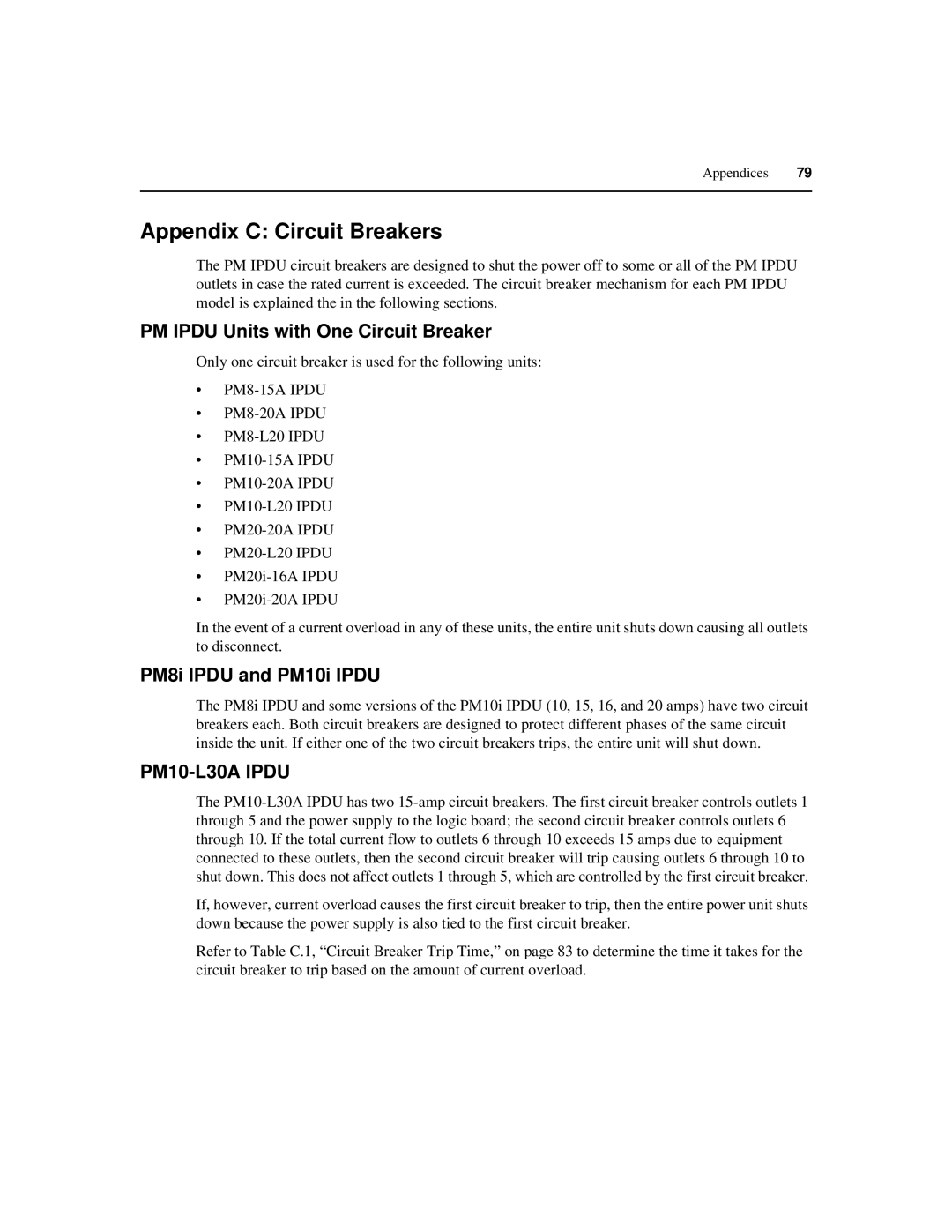Appendices 79
Appendix C: Circuit Breakers
The PM IPDU circuit breakers are designed to shut the power off to some or all of the PM IPDU outlets in case the rated current is exceeded. The circuit breaker mechanism for each PM IPDU model is explained the in the following sections.
PM IPDU Units with One Circuit Breaker
Only one circuit breaker is used for the following units:
•
•
•
•
•
•
•
•
•
•
In the event of a current overload in any of these units, the entire unit shuts down causing all outlets to disconnect.
PM8i IPDU and PM10i IPDU
The PM8i IPDU and some versions of the PM10i IPDU (10, 15, 16, and 20 amps) have two circuit breakers each. Both circuit breakers are designed to protect different phases of the same circuit inside the unit. If either one of the two circuit breakers trips, the entire unit will shut down.
PM10-L30A IPDU
The
If, however, current overload causes the first circuit breaker to trip, then the entire power unit shuts down because the power supply is also tied to the first circuit breaker.
Refer to Table C.1, “Circuit Breaker Trip Time,” on page 83 to determine the time it takes for the circuit breaker to trip based on the amount of current overload.
